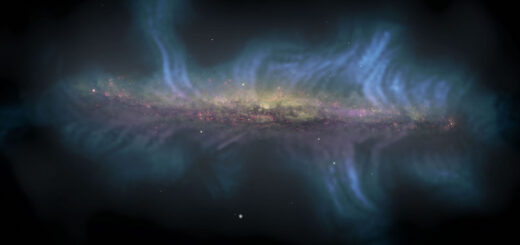Icarus: Most Distant Star, 9 Billion Light Years Away Found With Hubble’s Cosmic Lens
Searching for objects located in deep space is not easy and it requires long time observations using telescopes.
Now, the most distant individual star – named Icarus by astronomers – has been observed 9 billion light years from Earth.
The discovery was made by an international team of researchers, lead by Patrick Kelly, and including University of Tokyo School of Science Assistant Professor and Kavli IPMU Associate Scientist Masamune Oguri, and it was possible because its brightness had been magnified by 2000 times by the gravity of a larger object in front of it.

This is an Icarus capture by the Hubble Space Telescope. The left image shows galaxy cluster MACS J1149+2223 and the position of Icarus. The top right image shows how Icarus was not visible in 2011, and became visible in 2016. Image credit: NASA/ESA/P. Kelly
Galaxies are favorable targets because they are a collection of about 10 billion stars. However, individual stars are difficult to spot because of their faint light.
While originally observing galaxy cluster MACS J1149+2223, 5 billion light years away, using the Hubble Space Telescope, the researchers noticed a flickering light in the background. Closer analysis revealed the light was not from a star exploding at the end of its life, but a blue star.
In fact, the galaxy cluster’s gravity had bent space-time to magnify the star’s image, a phenomenon called gravitational lensing, where an object magnifies the light of objects directly behind it.
The discovery of Icarus is also important to researchers studying dark matter because its interaction with matter has a pronounced effect on the pattern of magnified stars. From the pattern of magnified stars in this study, the researchers were able to exclude the possibility that dark matter is made up mostly of a huge number of black holes with masses tens of times larger than the Sun.
Original story



 Creators of mankind
Creators of mankind Description of “Tall white aliens”
Description of “Tall white aliens” Where they came from?
Where they came from? About hostile civilizations
About hostile civilizations The war for the Earth
The war for the Earth “Tall white aliens” about eternal life
“Tall white aliens” about eternal life Video: “Nordic aliens”
Video: “Nordic aliens” Aliens
Aliens Alien encounters
Alien encounters The aliens base
The aliens base UFO
UFO Technology UFO
Technology UFO Underground civilization
Underground civilization Ancient alien artifacts
Ancient alien artifacts Military and UFO
Military and UFO Mysteries and hypotheses
Mysteries and hypotheses Scientific facts
Scientific facts


















